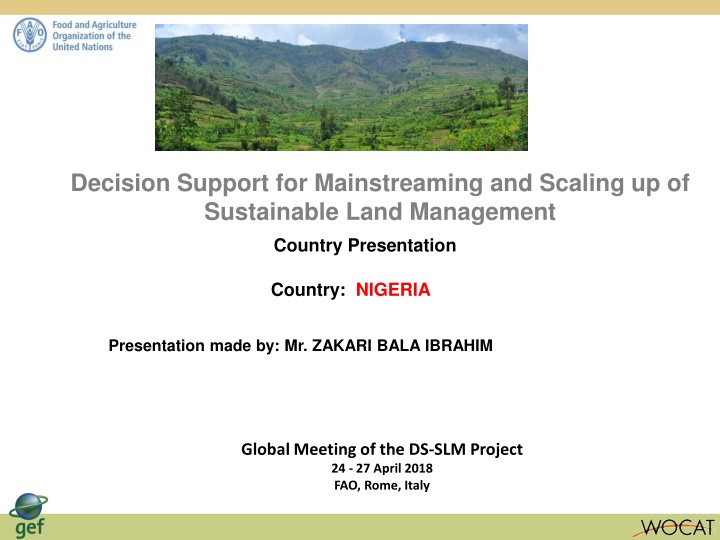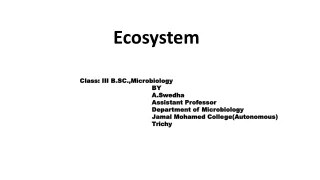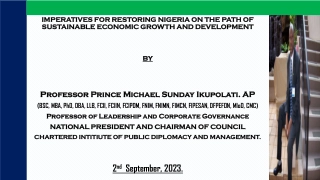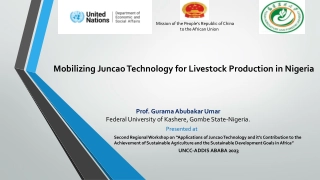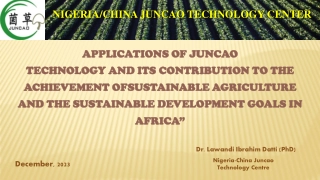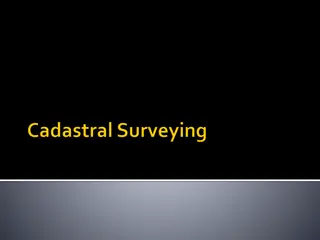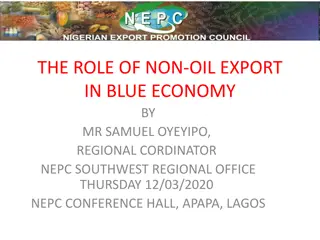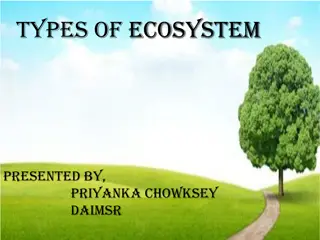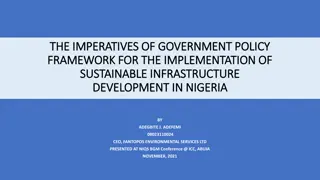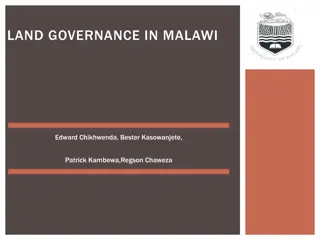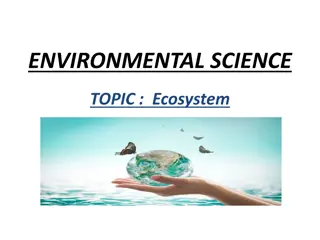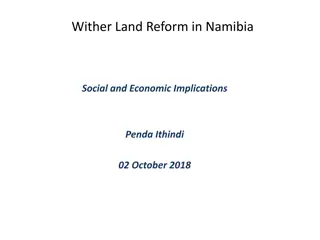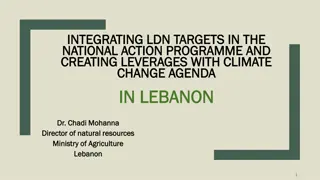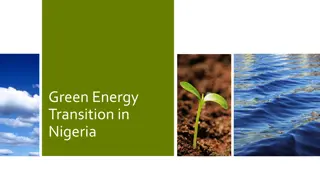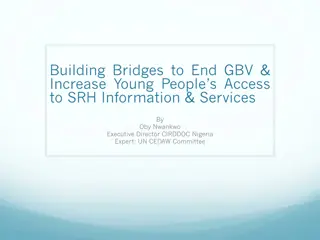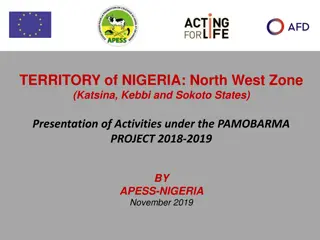Sustainable Land Management in Nigeria: Enhancing Ecosystems
Presentation on the mainstreaming and upscaling of sustainable land management practices in Nigeria, focusing on combating degradation, enhancing water and food security, and improving ecosystem services through specific project components and methodological frameworks. The institutional arrangements, assessment processes, and landscape prioritization are highlighted, emphasizing community involvement and local landscape assessments to identify best practices and optimal crop choices.
Download Presentation

Please find below an Image/Link to download the presentation.
The content on the website is provided AS IS for your information and personal use only. It may not be sold, licensed, or shared on other websites without obtaining consent from the author.If you encounter any issues during the download, it is possible that the publisher has removed the file from their server.
You are allowed to download the files provided on this website for personal or commercial use, subject to the condition that they are used lawfully. All files are the property of their respective owners.
The content on the website is provided AS IS for your information and personal use only. It may not be sold, licensed, or shared on other websites without obtaining consent from the author.
E N D
Presentation Transcript
Decision Support for Mainstreaming and Scaling up of Sustainable Land Management Country Presentation Country: NIGERIA Presentation made by: Mr. ZAKARI BALA IBRAHIM Global Meeting of the DS-SLM Project 24 - 27 April 2018 FAO, Rome, Italy
Objectives of the Project To contribute to combating DLDD To enhance water and food security To improve ecosystem goods and services. To mainstream and up scale SLM best practices Component of the Project: 1) Establishment of plantation 2) FMNR (Tasa) 3) conservation of degraded lands 4) capacity building (training w/shops) 5) Advocacy.
Institutional Arrangements National Steering Committee National Focal Point States and Local Govt. Steering Committee Community Project Implementation Committee
Module 2. National /States Assessment Process undertaken for the assessment Sites identification Collection of biophysical and socio-economic data Use of GPS Methodological Aspects: Random sampling method was used for the selection of the two States Results: a. Massive deforestation due to unsustainable agricultural practices. b. The soil moisture retention capacity is low. c. Over stocking of livestock on marginal lands
Module 3. Selection of priority landscapes Criteria used for the selection of the landscapes: Random sampling was used in selecting two States from 11 dry land States of the Country Landscapes selected: Jigawa and Katsina States in semi arid ecological zone
Module 4. Local / landscape assessments Process undertaken for the assessment: Consultation with the Local communities Methodological aspects: Town hall meeting with stakeholders Results: The local communities were able to identify their best farming methods (FMNR). Best yielding crops identified.(such as sorghum, millet, cowpea, beniseed, groundnut)
Module 4. SLM best practices identification Examples of best practices Soil Conservation, sustainable pastoralism, forest restoration, sustainable Agriculture, sylvopastoral, water management Use of WOCAT tools Nil Number of practices identified Establishment of plantation: Afforestation, orchards Farmer Manage Natural Regeneration Land Conservation Pastoral Land Enrichment
Conclusions- lessons learned This programme has opened our knowledge to best practices in conserving, management and restoration of degraded land. However, right from inception we encountered policy barrier in accessing the counterpart funds. The success so far achieved are from the little annual approved budget. We are now at the verge of getting the co-funds. Finally, if the funds are eventually accessed, the project would be implemented to meet up with the time frame.
